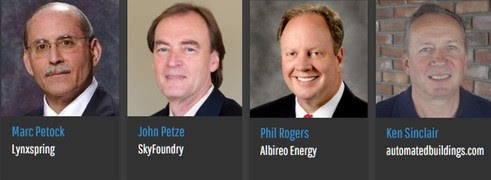Meeting the Needs of the Market – The Modern MASTER SYSTEM INTEGRATOR Evolves
Many Integrators in the industry started their journey working with one or two building systems and a relatively small list of manufacturers. Integration, interoperability and an IP-focus have forced the modern-day integrator to rethink what a smart building actually entails for operations. Multiple buildings, systems and vendors, along with the need for enhanced cybersecurity, have brought IP and IT issues to the forefront. Today’s Master System Integrator needs to be as well-versed in IT as they are in building systems. This dynamic session will present forward-thinking integrators to discuss topics such as increasing IT skills, enhanced training and developing a broader, more business-driven approach to smart buildings. OT, IT and IoT – Unpacking the Challenge of Managing a Changing Technology Landscape
It is not uncommon to find legacy technology in buildings that dates back more than 30 years. At a time when technology was analog and interoperability/convergence a distant dream, the systems were primitive at best. Since then, IT has made steady inroads into the Integrator landscape and now IoT has, yet again, introduced a new layer of complexity to the equation. While it is easy to suggest that these worlds should come together smoothly, the reality is it takes a lot of time, and methodologies vary widely in effectiveness. Add the idea of controlling a building from a phone and the picture gets even more complex. This crucial session will focus on the practical, real-world dirty details required to make this next generation smart building a reality. Bigger Clients, Projects and Opportunities – Shifting the Discussion from TECH to BUSINESS
In the beginning there was one building, one system and one vendor. Fast forward 30+ years and the smart, connected, high-performance, intelligent, sustainable building of today looks quite different. IT, the cloud, wireless, mobile devices and a host of other new technologies are making for a very complex proposition. Along with the increased complexity also comes greater opportunity. The projects are getting bigger and that means more business. Concurrently, the decisions for these smart, connected projects are moving up the ladder to the C-Suite and involve people from IT, operations, marketing and other departments. The focus of this conversation will be the need for successful MSIs to focus on business first, technology second. Delivering a Smart Building – Strategies to Mitigate the Growing Tech SKILLS SHORTGAGE
A declining interest and proficiency in math and science in high school, foreign university engineering students returning home with their skills, little interest in our industry by millennials, competition from more intriguing tech related companies…the list goes on and on. The bottom line is that our buildings are getting more complex, including the need to protect them from Cybersecurity threats, and the pool of candidates to support these new smart buildings is not keeping pace. Over the years, the industry has made attempts to solve this problem, along with the fact that some college systems are attempting to create programs to address this issue. This session will allow attendees to weigh in on this very important topic. From Proprietary Inbuilding to Proprietary CLOUD – Avoiding Strategic Mistakes
Over time, one of the major complaints was that the systems found in buildings were proprietary, not integrated nor interoperable. Over time middleware solutions began to offer a way in which to bring these disparate systems together in a cohesive manner. Enter the cloud and all of its benefits, we now see organizations rushing to take advantage of this modern technology only to find themselves once again dealing with disconnected systems. The industry is at a point where it needs to understand the benefits of integration, interoperability and cloud computing and come to terms on what a modern approach should look like. This session is sure to provide some very spirited discussion and debate on this “back to the future” topic. Autonomous Interactions – Integrating the OCCUPANT EXPERIENCE into Smart Buildings
It seems that over the last five years, everyone has become very comfortable with the idea of hitting a button on a mobile phone and having something happen. Hail a car, order a coffee, reserve a table, attend a concert and other instant experiences have become the norm. Things for the most part are different once you enter a building but that is changing. A host of new companies have arrived to deliver a variety of building experiences. Open the parking gate, get through security, hail the elevator, order the coffee, schedule the yoga class, turn down the A/C and turn on the lights are just some of the new expectations. Every integrator knows this is not an easy task and this session will strive to bring a balanced approach to the conversation. 5G, CBRS & IN-BUILDING WIRELESS – What is the Impact to a Smart Building Strategy?
The mobile phone revolution has exploded. We have gone from phone calls and texts to more computing power than the first NASA mission connected to a unified global network. The next generation of 5G, CBRS and other emerging technologies are poised to radically shift wireless communications inside a building. Though still a few years out, building owners and operators need to be thinking about the impacts now. WIFI, Distributed Antenna Systems (DAS) and even how we connect traditional building systems and future IoT devices is up for debate. Anyone involved in smart building projects will not want to miss this In-Building Wireless segment. The building communications infrastructure is key to a smart building strategy. | |








